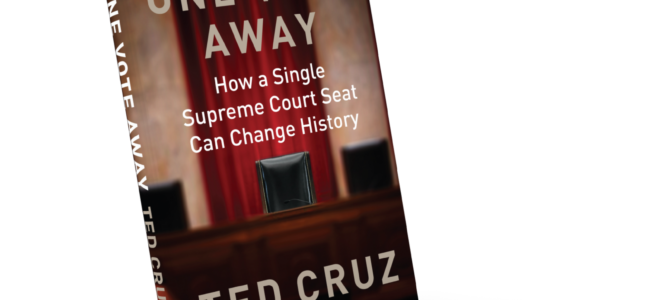President George H.W. Bush had two nominees to the Supreme Court: Clarence Thomas, who has been ferociously principled and profoundly consequential, and David Souter, who during his time on the court traveled from being mildly conservative to becoming the leader of the court’s left wing.
Souter had served on the New Hampshire Supreme Court and was a Harvard graduate and a Rhodes scholar. He has a high intellect, but nothing in his judicial record demonstrated even a whit of conservative instincts. He had just been appointed and confirmed to the U.S. Court of Appeals for the First Circuit, where he had spent mere weeks before being considered for the Supreme Court.
This nomination was to fill the seat vacated by Justice William Brennan, and at the end of the process, two judges were brought in to interview with Bush: Souter and Edith Jones, a judge from the U.S. Court of Appeals for the Fifth Circuit. Jones was everything Souter was not. She had demonstrated a proven record, upheld the Constitution, followed the law, and endured brutal press vilification for daring to do so. Yet she remained fearless, principled, and unbowed.
Bush was risk-averse, and New Hampshire Sen. Warren Rudman energetically vouched for Souter. Although not a conservative, Rudman told Bush, in effect, wink-wink, nudge-nudge, “even though there is zero paper trail, and there is nothing in the course of his life to prove that David Souter is conservative, trust us, he’ll be great.”
Nothing better captures the Republican disaster of Supreme Court nominations than that episode. Let me suggest something: If you have lived 50 years of your life, and there is nothing in anything you have said, written, or done to demonstrate you’re a conservative, then you’re not. And if by some bizarre miracle you happen to be, perhaps the Supreme Court of the United States is not the best place for the world to find out.
The Bush White House wanted to avoid controversy, and confirming Jones would have required a fight. Jones stood for something — the rule of law — so nominating her would have cost political capital. So they went with Souter instead.
A lifelong bachelor and a slim, reserved man, Souter had primarily known the rural world of New Hampshire. At lunch, he described his time on the New Hampshire Supreme Court, which was his only significant judicial experience prior to his nomination to the court. In particular, he explained how the complicated and important constitutional questions often before the U.S. Supreme Court never made it to the New Hampshire Supreme Court. Instead, he joked that their cases would “often involve a car that had hit a cow.”
I don’t think Souter knew he was a liberal when he was nominated to the Supreme Court. He had simply never confronted those issues — had never thought through them. In his first year or two on the court, he had a relatively conservative voting record, voting often with Justice Antonin Scalia.
Souter’s clerks often mirrored the temperament and jurisprudence of the justice. They were reliable liberals, often quintessential Birkenstock-wearing, granola-hippie types. I mean that more figuratively than literally, although some of his clerks fit that description literally as well.
There is no doubt that the world would be profoundly different if Bush had chosen Jones instead of Souter. To truly understand how dramatically things went wrong, however, we should reflect on what the court would have looked like had two nomination outcomes been different — had Robert Bork been confirmed instead of Anthony Kennedy, and Jones been nominated and confirmed instead of Souter.
If those two things had both happened, we would have had a five-justice majority of which Scalia would arguably have been the most liberal: a majority consisting of Chief Justice William Rehnquist, Clarence Thomas, Robert Bork, Edith Jones, and Antonin Scalia, with Justice Sandra Day O’Connor floating out there as the possible sixth vote in any particular case. The annals of constitutional history for the last four decades would have been dramatically different.
This lightly edited essay is excerpted from Sen. Ted Cruz’s book “One Vote Away: How a Single Supreme Court Seat Can Change History” (Regnery Publishing), out today.









